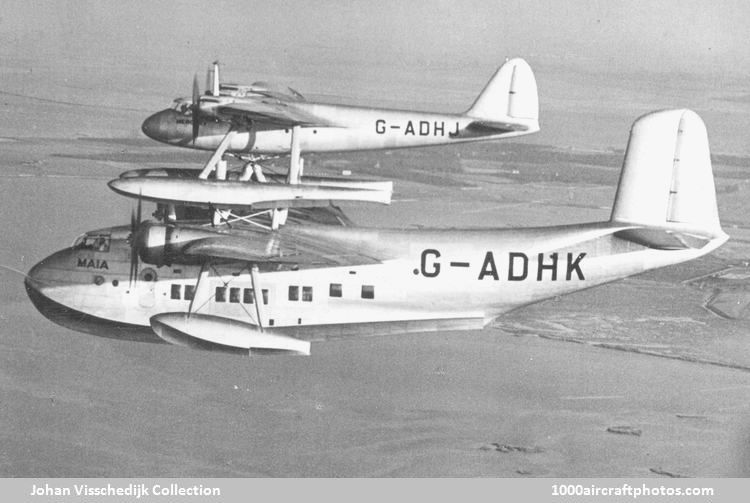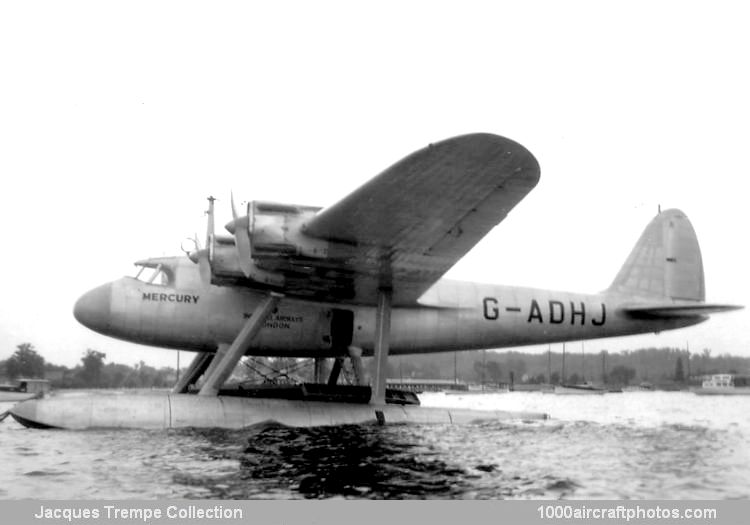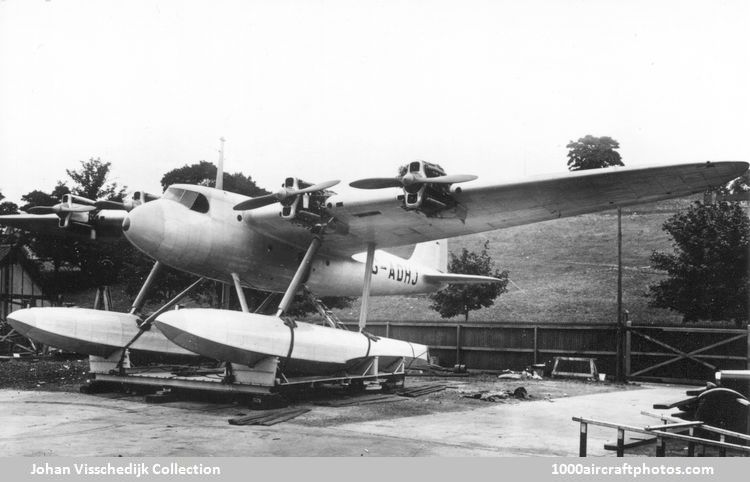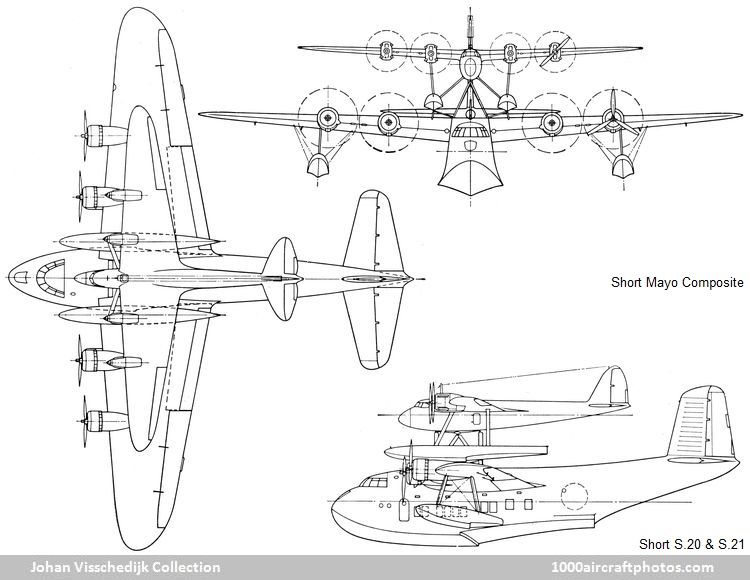10/31/2007. Remarks by
Johan Visschedijk: "The Short Mayo Composite, consisting of the S.20 and the S.21, was ordered by the Air Ministry to o prove the theory of Mayor R.H. Mayo (Technical Advisor to Imperial Airways) to extend the range of one aircraft by assisting it into the air on another.
Short S.20 (G-ADHJ) (
Jacques Trempe Collection) APS No. 1492
The S.20 was initially powered by four 340 hp Napier Rapier V sixteen-cylinder air-cooled H-engines (later replaced by the 370 hp Rapier VI) and flew for the first time on September 5, 1937.
Short S.20 and S.21 (G-ADHJ, G-ADHK) (
Ron Dupas Collection)
The first flight of the composition was made at Rochester on January 4, 1938, the first seperation in the air was made on February 6. On July 21, 1936, the composite took off from Foynes, Ireland, and at cruise altitude the S.20 (flown by Captain D.C.T. Bennett) was released and arrived 20 hr 20 min and 2,860 mls (4,603 km) later at Boucherville, Montreal, Canada.
The last seperation was made at Dundee, Scotland, on October 6, 1938, when Bennett flew the S.20 non-stop to the Orange River, South Africa, establishing a world distance record for seaplanes of 6,045 mls (9,728 km).






